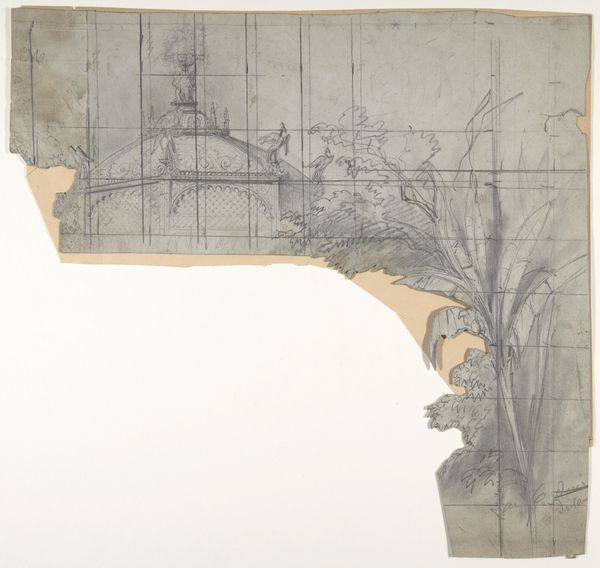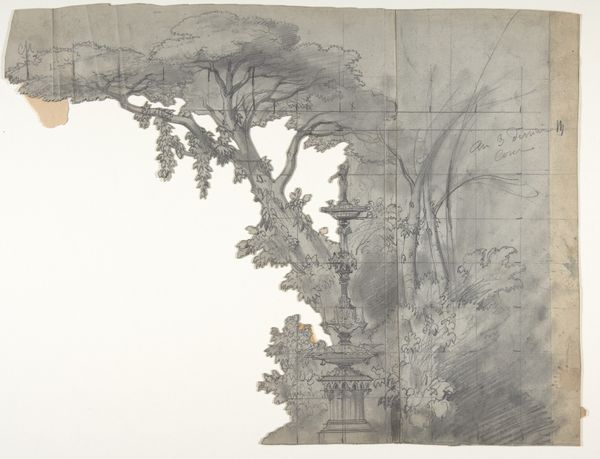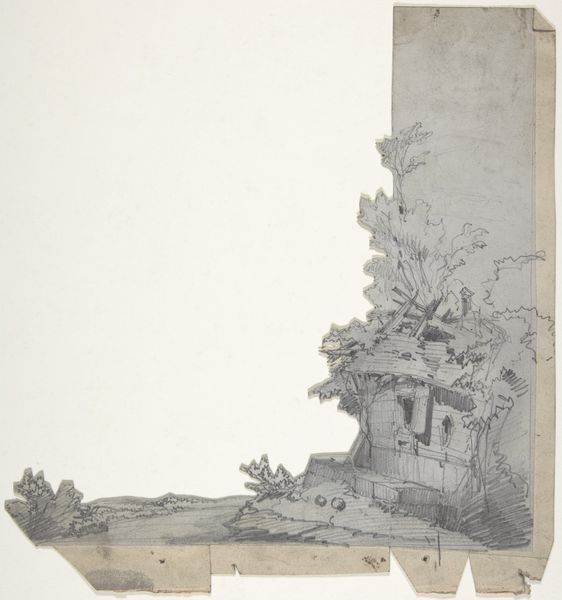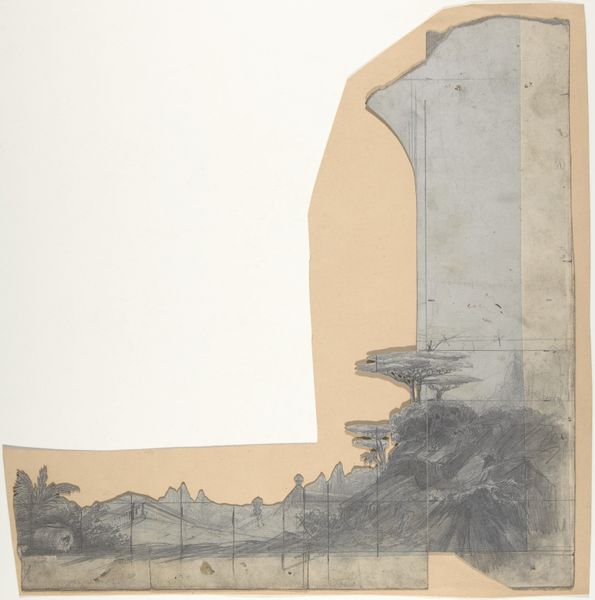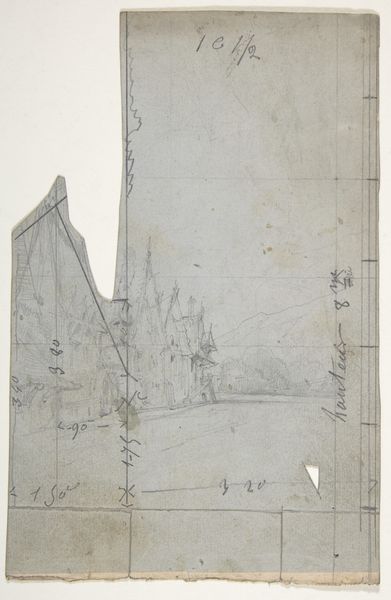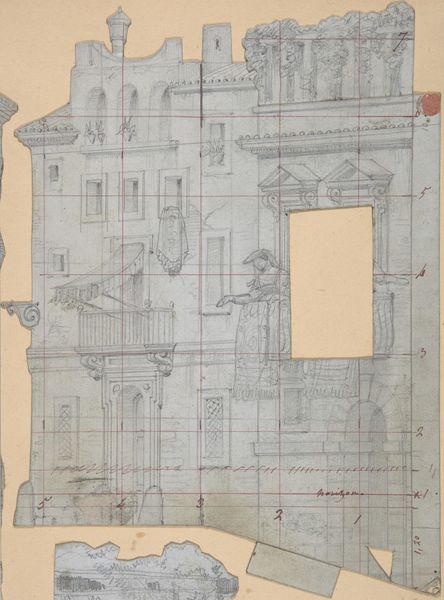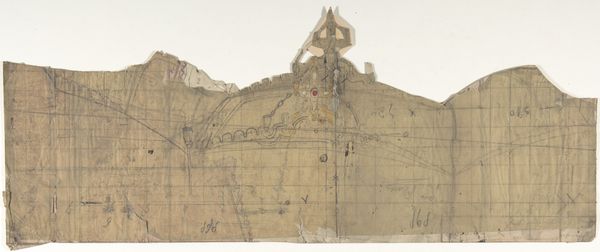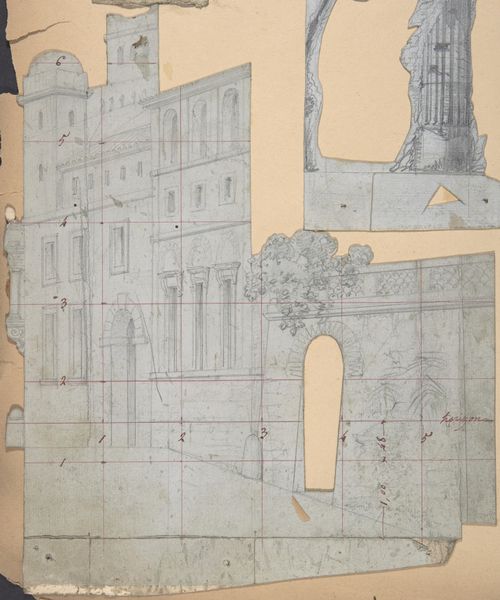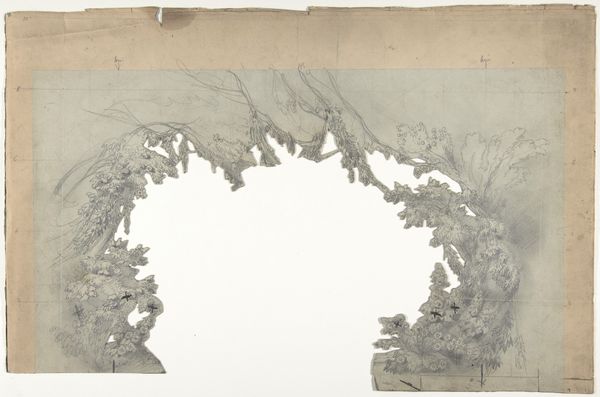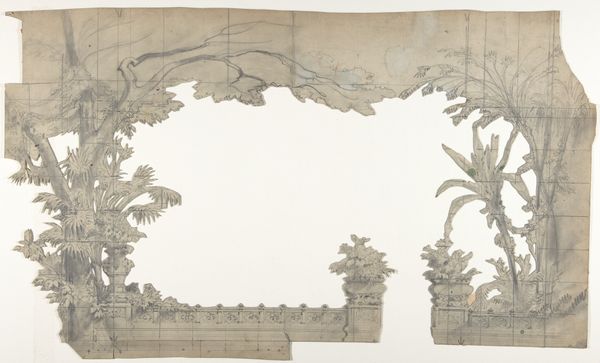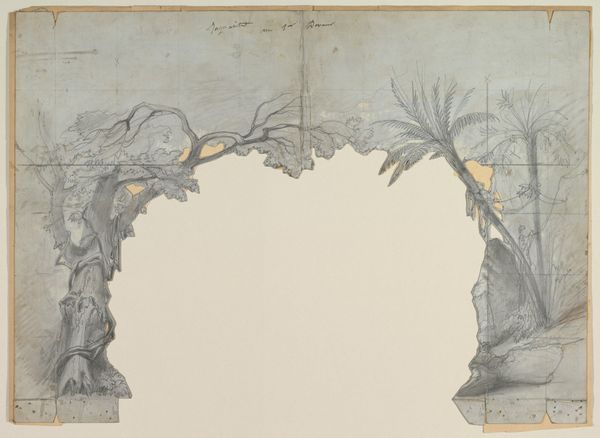
Design for a Stage Set at the Opéra, Paris 1840 - 1890
0:00
0:00
drawing, paper, pencil
#
drawing
#
neoclassicism
#
paper
#
pencil
#
cityscape
Dimensions: Irregular sheet: 11 13/16 x 13 15/16 in. (30 x 35.4 cm)
Copyright: Public Domain
Curator: Welcome. We're looking at Eugène Cicéri's "Design for a Stage Set at the Opéra, Paris," created sometime between 1840 and 1890. It’s a drawing done with pencil on paper. Editor: It's evocative, though. Somber even. Despite the implied grandeur of an opera house, there's a tentative quality, enhanced by the fragility of the paper. You can see the grid lines, it feels so provisional. Curator: Precisely! The grid emphasizes the architectural framework. The design itself is rigorously symmetrical and clearly inspired by neoclassical ideals. Look at the precisely rendered details on the facade of this building, these decorative urns, those repeated motifs. There’s a clear devotion to order. Editor: But what's being ordered, and for whom? Opulence on stage serves to legitimize the power structures of the Second Empire. All those intricate details are there to distract from very real social issues just outside those gilded doors. Consider also the missing portions. Does this imply decay and social fragmentation? Curator: One could see it that way. Or, quite simply, as an incomplete preparatory sketch for a design never realized or a sketch which has simply deteriorated through handling. But returning to form, I find the shading particularly effective in creating depth. Cicéri masterfully employs tonal variation. It gives substance to what otherwise might remain a flat diagram. Editor: Still, it's a fragment hinting at larger structures of power and performance. We need to consider it within the context of Parisian society in the 19th century, the disparities masked by spectacle, and who has access to it. How can the opera create inclusivity rather than exclusion? Curator: Well, by focusing solely on its formal components—line, shadow, the structure's symmetry—one grasps how meaning and feeling can be evoked through design alone, abstracted from the social arena. Editor: And yet, we are never really abstracted from the social arena. Understanding that dynamic of power allows us to interrogate not only Cicéri’s work, but also the systems it subtly reinforces. Curator: I agree this reading of historical context has validity but considering this particular pencil drawing’s pure architectonic excellence brings us equally valuable insight. Editor: So much emerges, whichever door we decide to open first.
Comments
No comments
Be the first to comment and join the conversation on the ultimate creative platform.
